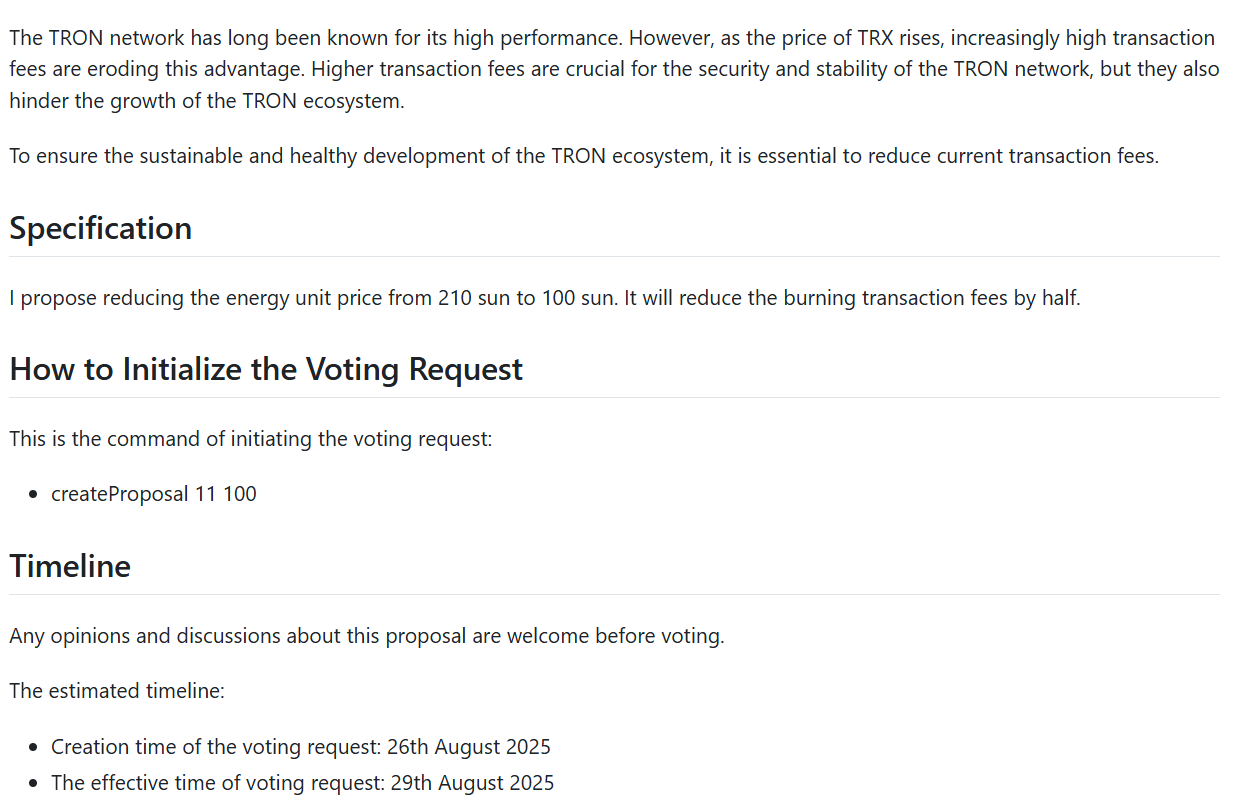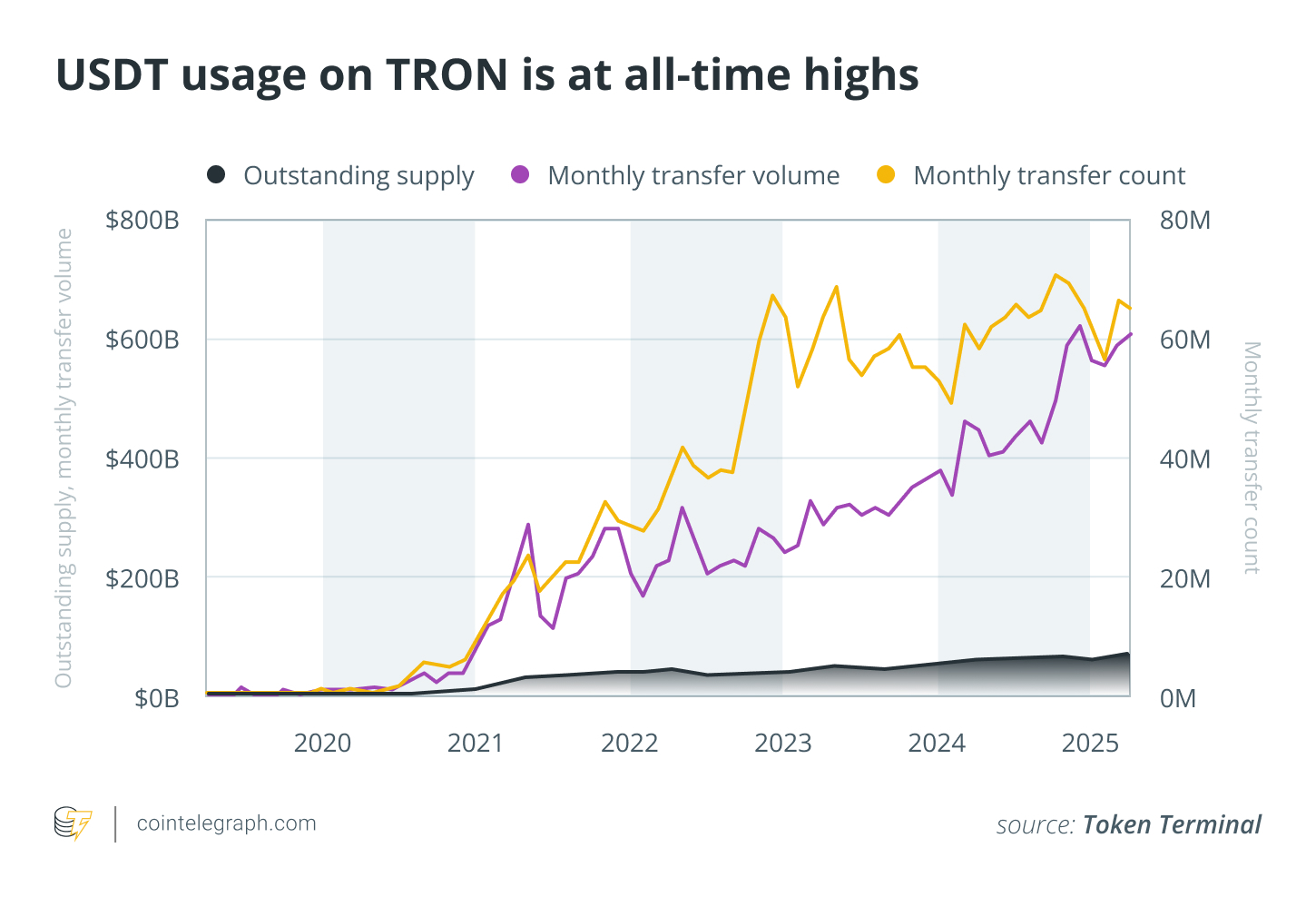Tron transaction fees are proposed to be cut by roughly half: the energy unit price would fall from 210 sun to 100 sun, lowering TRX per transaction and improving accessibility. Supporters say this could expand usable capacity by ~45%, though it may turn a net burn into net inflation unless activity rises.
-
Proposal #789 halves the energy unit price to 100 sun, lowering transaction costs.
-
Voting closes Friday; at least 18 of 27 Super Representatives must approve for passage.
-
At 210 sun Tron currently nets ~76 million TRX burned; 100 sun risks reversing burn to inflation unless usage increases.
Tron transaction fees cut proposed: halving energy price to 100 sun aims to boost adoption—vote closes soon. Read the implications and next steps.
Proposal #789 to halve Tron’s energy unit price is winning strong support ahead of Friday’s voting deadline, with backers arguing lower fees will expand adoption but possibly reverse the network’s current TRX burn.
A GitHub submission to the Tron Improvement Proposals repository proposes cutting the energy unit price from 210 sun to 100 sun. One TRON (TRX) equals 1,000,000 sun, so the change halves energy costs for transactions that consume energy.

What are Tron transaction fees and how will Proposal #789 change them?
Tron transaction fees are paid in TRX and tied to energy units priced in sun. Proposal #789 reduces the energy unit price from 210 sun to 100 sun, effectively halving the TRX required for energy-consuming transactions and lowering on-chain costs for users and dApps.
How does the fee reduction affect TRX supply and inflation?
At the current 210 sun rate Tron achieves a net burn of approximately 76 million TRX. Cutting to 100 sun would reduce the burn per transaction and could convert net burn into net inflation unless transaction volumes grow enough to compensate.
Estimates in governance discussions suggest the lower rate could expand affordability to roughly 45% more users, particularly benefiting stablecoin transfers and other high-frequency uses.
The proposer, GrothenDI, submitted Issue #789 on Aug. 8. The submission cites historical precedent: Proposal #95, which halved energy costs in 2024, coincided with a notable uptick in smart contract deployments.
Why is the proposal gaining support now?
Voting opened Tuesday and will close Friday. As of midweek the proposal had received enthusiastic support from several major ecosystem participants including Chain Cloud, CryptoChain, Nansen, HTX.com, P2P.org and Tron Alliance.
Under Tron’s governance, approval requires at least 18 of 27 Super Representatives. With 17 affirmative votes at the latest status check, passage appears likely but not certain.
Launched in 2017, Tron remains one of the larger blockchains by market capitalization, currently valued at about $33.1 billion according to CoinMarketCap. The network has also seen its stablecoin supply rise by approximately 40% year-to-date, underscoring sustained activity.

Related: Tron Inc. seeks $1B to grow TRX holdings as stock rallies
Related: Crypto Biz: Wall Street giants bet on stablecoins
Frequently Asked Questions
How is voting conducted for Tron improvement proposals?
Super Representatives vote on proposals published to the Tron Blockchain Explorer. A majority threshold of 18 out of 27 SRs is required for approval under current governance rules.
Will lower fees guarantee more users?
Lower fees increase accessibility and reduce friction, which historically correlates with higher deployments and activity, but increased adoption depends on developer activity and real-world demand matching the improved economics.
Key Takeaways
- Fee cut proposed: Energy price from 210 sun to 100 sun would halve many transaction costs.
- Governance deadline: Voting closes Friday; at least 18 of 27 Super Representatives must approve.
- Trade-off: Improved affordability may boost adoption but risks converting current net burn (~76M TRX) into net inflation.
Conclusion
Proposal #789 aims to make Tron transactions materially cheaper by cutting energy costs to 100 sun, a move designed to broaden accessibility and support high-volume use cases. Stakeholders must weigh short-term inflation risks against potential long-term growth. Watch the Super Representative vote outcome this Friday for the final decision and on-chain metrics for adoption signals.
